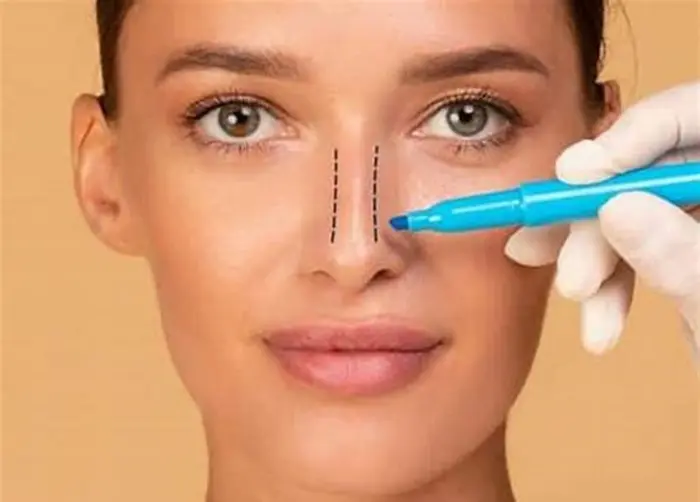Rhinoplasty, commonly referred to as a nose job, is a surgical procedure aimed at reshaping or resizing the nose. While many individuals seek rhinoplasty for cosmetic reasons, there are several medical conditions that may necessitate this procedure and potentially qualify patients for free or insurance-covered surgery. This article explores seven such conditions, providing detailed insights into each and the criteria that may make rhinoplasty a medically necessary procedure.
1. Nasal Obstruction
Causes of Nasal Obstruction
Nasal obstruction occurs when the nasal passages are blocked, making it difficult for individuals to breathe through their nose. This condition can be caused by several factors, including:
Deviated Septum: A misalignment of the nasal septum that obstructs airflow.
Nasal Polyps: Noncancerous growths in the nasal passage or sinuses.
Enlarged Turbinates: Swollen structures within the nasal cavity that regulate airflow and humidify the air we breathe.
Symptoms and Impact
Individuals with nasal obstruction often experience:
Difficulty breathing through the nose
Frequent sinus infections
Chronic nasal congestion
Sleep disturbances, including sleep apnea
Rhinoplasty for Nasal Obstruction
Rhinoplasty, combined with septoplasty or other procedures, can correct structural issues causing nasal obstruction. Insurance companies may cover the cost of surgery if it is deemed medically necessary to improve breathing and overall quality of life.
See Also: 6 Reasons You Should Not Blow Your Nose After Rhinoplasty
2. Congenital Anomalies
Common Congenital Anomalies Affecting the Nose
Congenital anomalies are structural defects present at birth. Common nasal congenital anomalies include:
Cleft Lip and Palate: A split in the upper lip and/or roof of the mouth that can affect the nose’s shape and function.
Choanal Atresia: A blockage of the nasal passage by tissue.
Symptoms and Challenges
Congenital anomalies can lead to:
Difficulty breathing
Feeding problems in infants
Speech difficulties
Facial asymmetry
Rhinoplasty for Congenital Anomalies
Corrective rhinoplasty can address the structural abnormalities associated with congenital anomalies. These procedures are often covered by insurance as they are crucial for improving breathing, appearance, and function.
3. Trauma-Induced Deformities
Causes of Nasal Trauma
Nasal trauma can result from various incidents such as:
Sports injuries
Automobile accidents
Physical assaults
Falls
Impact of Nasal Trauma
Trauma can cause:
Fractured nasal bones
Deviated septum
Soft tissue damage
Persistent swelling and bruising
Rhinoplasty for Trauma-Induced Deformities
Reconstructive rhinoplasty is essential for restoring the nose’s appearance and function following trauma. Insurance coverage is typically provided for such medically necessary procedures aimed at correcting deformities and ensuring proper nasal function.
4. Chronic Sinusitis
Understanding Chronic Sinusitis
Chronic sinusitis is a prolonged inflammation of the sinuses that can last for 12 weeks or longer despite treatment efforts. It is often linked to:
Allergies
Infections
Nasal polyps
Structural issues in the nasal cavity
Symptoms and Effects
Chronic sinusitis symptoms include:
Persistent nasal congestion
Thick nasal discharge
Facial pain and pressure
Reduced sense of smell and taste
Rhinoplasty for Chronic Sinusitis
Functional rhinoplasty can help by addressing structural issues contributing to sinusitis. Procedures such as septoplasty or turbinate reduction are often performed in conjunction with rhinoplasty to improve sinus drainage and airflow. Insurance may cover these surgeries if they are deemed necessary for treating chronic sinusitis.
5. Post-Surgical Complications
Causes of Post-Surgical Complications
Complications can arise from previous nasal surgeries, including:
Scar tissue formation
Structural instability
Breathing difficulties
Impact on Patients
Post-surgical complications can lead to:
Persistent nasal obstruction
Cosmetic deformities
Chronic pain and discomfort
Revision Rhinoplasty for Post-Surgical Complications
Revision rhinoplasty is often required to correct issues from prior surgeries. Insurance coverage may be available if the revision surgery is necessary to resolve functional problems or severe cosmetic deformities affecting the patient’s quality of life.
6. Sleep Apnea
Understanding Sleep Apnea
Sleep apnea is a serious sleep disorder where breathing repeatedly stops and starts during sleep. It is commonly caused by:
Obstructive sleep apnea (OSA): Blockage of the airway, often due to excess tissue or structural issues in the nose and throat.
Central sleep apnea: The brain fails to send proper signals to the muscles that control breathing.
Symptoms and Health Risks
Sleep apnea symptoms include:
Loud snoring
Gasping for air during sleep
Daytime fatigue
Difficulty concentrating
Increased risk of heart disease and stroke
Rhinoplasty for Sleep Apnea
Rhinoplasty can be part of a comprehensive treatment plan for sleep apnea, especially if nasal obstruction contributes to the condition. Procedures such as septoplasty, turbinate reduction, or nasal valve repair may be performed. Insurance may cover these surgeries if they are essential for treating sleep apnea and improving the patient’s health.
7. Reconstructive Needs After Skin Cancer Removal
Skin Cancer and the Nose
Skin cancer can affect the nose, leading to:
Basal cell carcinoma
Squamous cell carcinoma
Melanoma
Impact of Skin Cancer Removal
Surgical removal of skin cancer can result in:
Significant tissue loss
Nasal deformities
Functional impairment
Rhinoplasty for Reconstructive Needs
Reconstructive rhinoplasty is often necessary after skin cancer removal to restore the nose’s appearance and function. These procedures are typically covered by insurance as they are crucial for patient recovery and well-being.
Conclusion
Rhinoplasty can be more than just a cosmetic procedure; it often serves vital functional and reconstructive purposes. Conditions such as nasal obstruction, congenital anomalies, trauma-induced deformities, chronic sinusitis, post-surgical complications, sleep apnea, and reconstructive needs after skin cancer removal can all necessitate rhinoplasty. When deemed medically necessary, these procedures may be covered by insurance, providing patients with the opportunity to improve their health and quality of life.
Understanding the medical indications for rhinoplasty and navigating insurance coverage can be complex. Patients are encouraged to consult with a qualified otolaryngologist or plastic surgeon to discuss their specific conditions and determine the best course of action.
Related topics:

